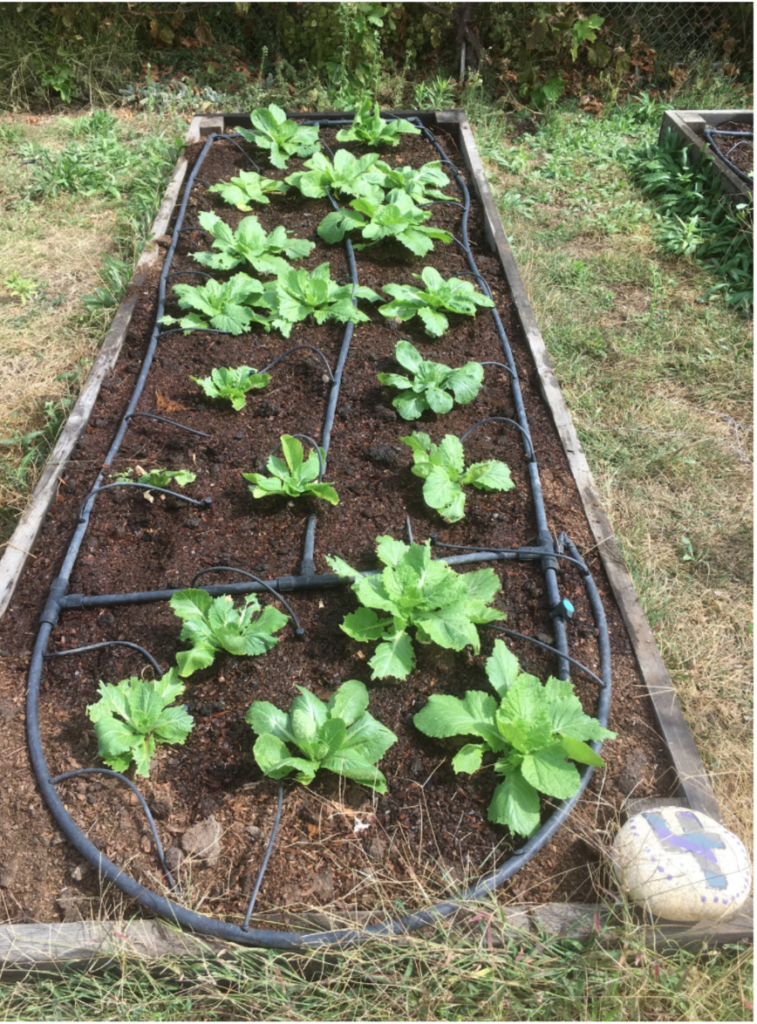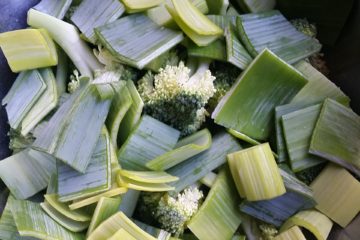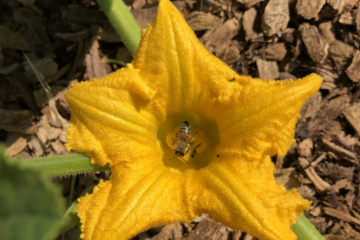Written by Zoee Tanner, Education and Curriculum Development
Not much can withstand the cold that comes with fall and winter, but Chinese Cabbage is one tough leafy machine! Hailing from China, this superpowered veggie has been a wonderful component of East Asian cuisine for thousands of years (Trinklein). It is part of the Brassicaceae family better known as the mustard plant family which is also home to broccoli, brussel sprouts, and kale. Chinese Cabbage actually has three common varieties: Napa, Michihli, and Pei Tsai of which Napa is most commonly used (Albert).
Chinese cabbage is a powerhouse of a vegetable in the way it provides an excellent source of vital nutrients. It contains an ample amount of vitamin C, an essential component of healthy immune system function, which is something of importance given the flu season is right around the corner. In addition, it is rich in vitamin A and K which both aid in other important bodily functions such as good eyesight and bone health. Aside from it’s vitamin content, Chinese Cabbage is also abundant in the antioxidants phenol acid and flavonoid which help protect the body from potentially harmful free radicals (Liang et. al).
Today Chinese Cabbage can easily be found in most traditional East Asian dishes, though it can also be used in less traditional ways. It’s sweeter flavor and more delicate leaf make it quite distinguishable from other cabbage varieties which can be more hardy (Wan). With that, its unique properties pair great in stir-fry or soup, however, it is a delicious addition to any dish. Chinese Cabbage is also tasty when shredded and used raw in salads. One wonderful use of Chinese Cabbage is in producing Kimchi, a fermented vegetable dish that is also commonly added to other recipes. Kimchi is a traditional Korean food that is known for its sour and tangy taste though depending upon the additional ingredients used, can also be spicy or savory (Moncel). Given Kimchi is fermented, it is an especially fantastic source of probiotics which help promote positive gut health in addition to the health benefits already associated with Chinese Cabbage itself.
Chinese Cabbage is an excellent addition to both your garden and your plate. As a vegetable steeped in rich East Asian history and culture, it truly is one special plant. Combined with its nutritional value, you are sure to score by adding Chinese Cabbage to your life whether it be in a stir-fry or as Kimchi. Next time you find yourself deciding what to make for dinner, consider Chinese Cabbage for a fresh and delightful dish!

Want to grow your own Chinese Cabbage?
Check out this awesome source from the University of Minnesota for how to best grow it: Growing Chinese Cabbage and Bok Choy in Home Gardens. It is important to note that while this source contains good general growing information, some parts focus on the growing conditions in Minnesota which generally has a much colder climate than California and thus will have slightly different guidelines.
Looking for culturally diverse or unique recipes to use Chinese Cabbage in your garden?
Here are a few tasty ones to try:
- Chinese Cabbage Stir-Fry
- Napa (Chinese) Cabbage Salad with Hot Oil Dressing
- Traditional Kimchi
- Simmered Napa (Chinese) Cabbage with Fried Tofu
Sources:
Albert, Steve. “How to Serve Chinese Cabbage” Harvest to Table, https://harvesttotable.com/chinese_leaveschinese_leaves_i/. Accessed 8 Oct. 2020.
Liang, Ying et. al. “Phytochemicals and antioxidant activity in four varieties of head cabbages commonly consumed in China” Food Production, Processing and Nutrition, vol. 1, no. 3, 2019. BioMed Central, https://doi.org/10.1186/s43014-019-0003-6. Accessed 9 Oct. 2020.
Moncel, Bethany. “What is Kimchi?” The Spruce Eats, 22 Jul. 2020, https://www.thespruceeats.com/kimchi-1328777. Accessed 9 Oct. 2020.
Trinklein, David. “Chinese Cabbage: Good Choice for Fall Gardens” University of Missouri, 20 Jul. 2018, https://ipm.missouri.edu/MEG/2018/7/Chinese-cabbage-Good-choice-for-fall-gardens/index.cfm. Accessed 8 Oct. 2020.
Wan, Liv. “What is Chinese Cabbage and How to Cook It” The Spruce Eats, 21 Oct. 2019, https://www.thespruceeats.com/how-to-cook-chinese-cabbage-4106993#:~:text=Health%20Benefits&text=Napa%20cabbage%20contains%20many%20antioxidant,folic%20acid%20and%20Vitamin%20B. Accessed 9 Oct. 2020.



0 Comments